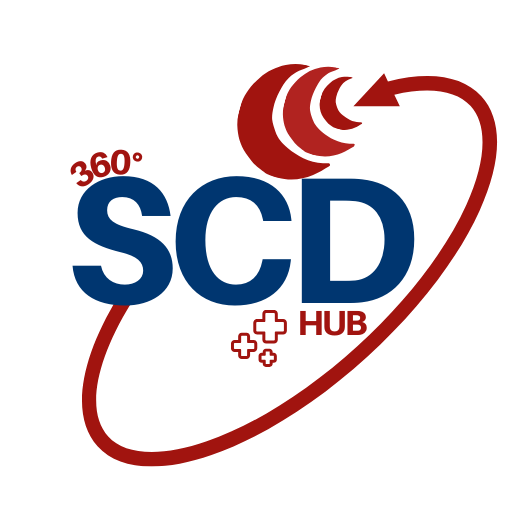Background
Stroke is one of the most common and devastating complications of SCD. In the absence of primary stroke prevention, approximately 10 percent of children with SCA will have overt stroke.
This complication presents as sudden onset of weakness, numbness, or other focal neurological signs such as visual disturbances, dysarthria, aphasia, or ataxia. Transient ischemic attacks (TIAs) often precede stroke and may be a harbinger of stroke. Overt stroke in children is generally secondary to stenosis or occlusion of the internal carotid or middle cerebral artery. Events may be precipitated by acute chest syndrome (ACS), parvovirus infection, or other acute anemic events. Overt stroke recurs in most children with SCA who do not receive chronic transfusions or successful hematopoietic stem cell transplantation.
Transcranial Doppler (TCD) imaging of large intracranial blood vessels to detect increased velocities secondary to stenosis can predict risk of stroke in children with SLA. Primary stroke prevention using regular blood transfusions in children with such elevated velocities proved successful in the NIH-funded STOP trial. This approach—which used transfusions for an abnormal TCD velocity (>200 cm/sec has resulted in a declining incidence of primary overt stroke in children with SCD.” Unfortunately, discontinuation of such transfusions was shown in the STOP-2 trial to result in a high rate of reversion to increased TCD velocities or to oven stroke. Therefore, such transfusions may be necessary indefinitely.
Adults with SCA also have a high risk of both ischemic and hemorrhagic stroke. The latter is usually sudden, with severe headache, seizures, and loss of consciousness. The mortality rate is high. Limited data suggest that TCD is not predictive of either ischemic or hemorrhagic stroke in adults.
Performing neuroimaging with MRI often reveals silent cerebral infarcts, atrophy, or other findings in children or adults with SCA who lack signs or symptoms of stroke but who often have a history of transient ischemic episodes and/or cognitive impairment. However, the specific indications for these imaging studies are controversial, and management of abnormal findings is uncertain
Summary of the Evidence
Fifty observational studies that evaluated screening with CT scan and MRI were identified. These studies examined the prevalence of certain abnormalities such as silent infarcts; however, no studies compared a screening strategy versus no screening, and no study reported a benefit of screening or early detection on important outcomes. Overall, the quality of evidence supporting the use of screening with MRI or CT scan in adults and children was very low.
Two RCTs and 50 observational studies on the use of TCD were included. The two RCTs evaluated the efficacy of early intervention and demonstrated that screening coupled with prophylactic transfusion can markedly reduce the risk of stroke in children with SCA whose cerebral blood flow velocity measurements are considered at high risk. The fifty observational studies enrolled more than I 1,000 patients and assessed the use of TCD as a screening test in children with SCD. The quality of evidence supporting screening with TCD was considered moderate to high.
In an observational study of 274 patients, the cumulative incidence of conversion from a normal TCD velocity (<170 cm/sec) to a conditional TCD velocity (170-199 m/sec) was 18 percent (10—26 percent) within 18 months from the first examination. 02 Risk of stroke was higher in children with abnormal TCD than in children with normal TCD, conditional TCD, or inadequate TCD examination results. Children with normal cerebral blood flow had no strokes after 4 years of follow up. No trials were found that addressed the optimal time interval for screening patients with documented normal TCD velocity. Information from a modeling and decision analysis (not a clinical study) suggests that the optimal stroke prevention strategy is annual TCD ultrasonography screening up to age 10, with transfusion for those at high risk until age 18. No clinical trials have been published evaluating this strategy. Outcome data in the studies that evaluated TCD screening are mainly derived from patients with genotypes HbSS and HbS§O-thalassemia; therefore, it was not possible to infer about the utility of TCD screening in other genotypes. Recommendations 1. In children with SCA, screen annually with TCD according to methods employed in the STOP studies, beginning at age 2 and continuing until at least age 16. (Strong Recommendation, Moderate Quality evidence) 2. In children with conditional (170—199 cm/sec) or elevated (>200 cm/sec) TCD results, refer to a specialist with expertise in chronic transfusion therapy aimed at preventing stroke.
(Strong Recommendation, High Quality Evidence)
3. In children with genotypes other than SCA (e.g., HbS§*-thaIassemia or HbSC), do not perform screening with TCD. (Strong Recommendation, Low-Qualify Evidence)
4. In asymptomatic children with SCD, do not perform screening with MRI or CT.
(Moderate Recommendation, Low Quality Evidence)
5. In asymptomatic adults with SCD, do not perform screening with neuroimaging (TCD, MRI, or CT).
(Moderate Recommendation, Very Low Quality Evidence)
